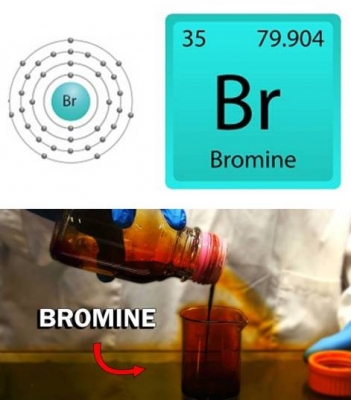
In 1825, a salt maker sent a sample of salt spring waters from Bad Kreuznach, a German town, asking chemist Justus von Liebig for an analysis. This sample had a very high amount of bromine in it, and Liebig had isolated it too. But he considered the substance as a compound of iodine and chlorine. Had he not taken it lightly, Liebig would have been the discoverer of bromine.
The next person in the story of bromine’s discovery is Carl Loewig, who discovered it while he was still a chemistry student at Heidelberg University in Germany. Loewig’s hometown was Bad Kreuznach, the same place from where Liebig had received the sample. Loewig took water from a salt spring in his hometown and added chlorine to it. He then shook the solution with ether and found that a red-brown substance dissolved in the ether. Loewig evaporated the ether to find bromine, a red-brown liquid.
Loewig’s professor at Heidelberg University asked him to prepare more of this substance for testing. But this took him a year, and by that time, in 1826, another person named Antoine Balard had discovered bromine and took the credit. Balard took brine (evaporated sea water in which salts have been concentrated) and crystallized salt from it. After that, he took the remaining liquid and mixed it with chlorine. Later, this solution was distilled, which left behind a dark red liquid-bromine.
Balard published his results in 1826, which provided evidence to the discovery. Since he was the first to publish, he came to be known as bromine’s discoverer.
Picture Credit : Google




